Getting to the Galapagos from Quito required an early departure from the hotel. We left the hotel by 5:40 AM to get to Quito airport. Quito Airport is very modern and nicer than many we have gone through. It was built in the last couple of years (2013) so it was easy to navigate especially even though they force you through the duty-free area to get to the gate. Silversea personnel made sure our luggage was taken care of and checked to the Galapagos. All flights to the Galapagos are local. In this case, the flight stopped in Guayaquil and then went on to San Cristobal.
The Galapagos are conveniently located 862 miles from the Ecuador mainland. They are sparsely inhabited with only five out of 19 islands inhabited and there are about 61 islands and islets. Approximately 25,000 people live there and the islands that are inhabited are the older islands that have soil so there is farming and fresh water (to some extent) so people can survive in an otherwise stark environment. All of the islands are volcanic islands. The wildlife are caves, lava tubes, and all kinds of rock erosions that show nature’s design. It is a foreboding, barren land that forces all life has to find ways to survive and in fact, alter their beings to adapt.
The islands are on the Nazca plate that moves five centimeters a year toward the south, south east. The islands are divided into the older islands that may be 5-6 million years old such as San Cristobal which is one of the most populated islands along with Santa Cruz and the younger islands such as Fernandina and Isabela that are around 30-600 thousand years old in the west where volcanoes erupt. Our cruise was the western islands so we saw much more of the volcanic lava islands.
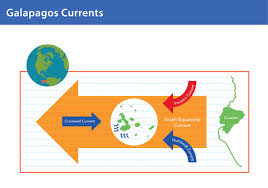
Three currents (the Humboldt, the Cromwell, and the Panama) combine to allow the Galapagos to be a special place. The Humboldt current is a cold one that runs north along the South American continent, the Panama current is a warm one that runs from the north, and the Cromwell is a deep-sea current that bring nutrients from the bottom up to the surface ensuring the sea creatures of all types the food sources needed to survive. Recently, we heard 95% of the creatures that were living during the time Darwin was in the Galapagos still exist. Ecuador removed many animals that were taking food away from the existing Galapagos species.
As we flew into San Cristobal, we spotted our ship. It was so exciting to realize we were actually in the Galapagos. It became more real when we passed through passport control and received our tourist pass that required us to give it back upon departure. We got onto another bus and then traveled a couple of miles to the municipal pier where we waited for our zodiac to take us to the ship. The zodiacs became our preferred way of travel during the trip. The ship is not allowed to dock at any of the islands so zodiacs brought everything, people, luggage, garbage, food, everything the ship needed. The young men who were the zodiac pilots were awesome. They were so helpful and kind to all of us.
As we stood on the pier, we were met with some of the denizens of the islands: sea lions, funky bright orange crabs, and pelicans.
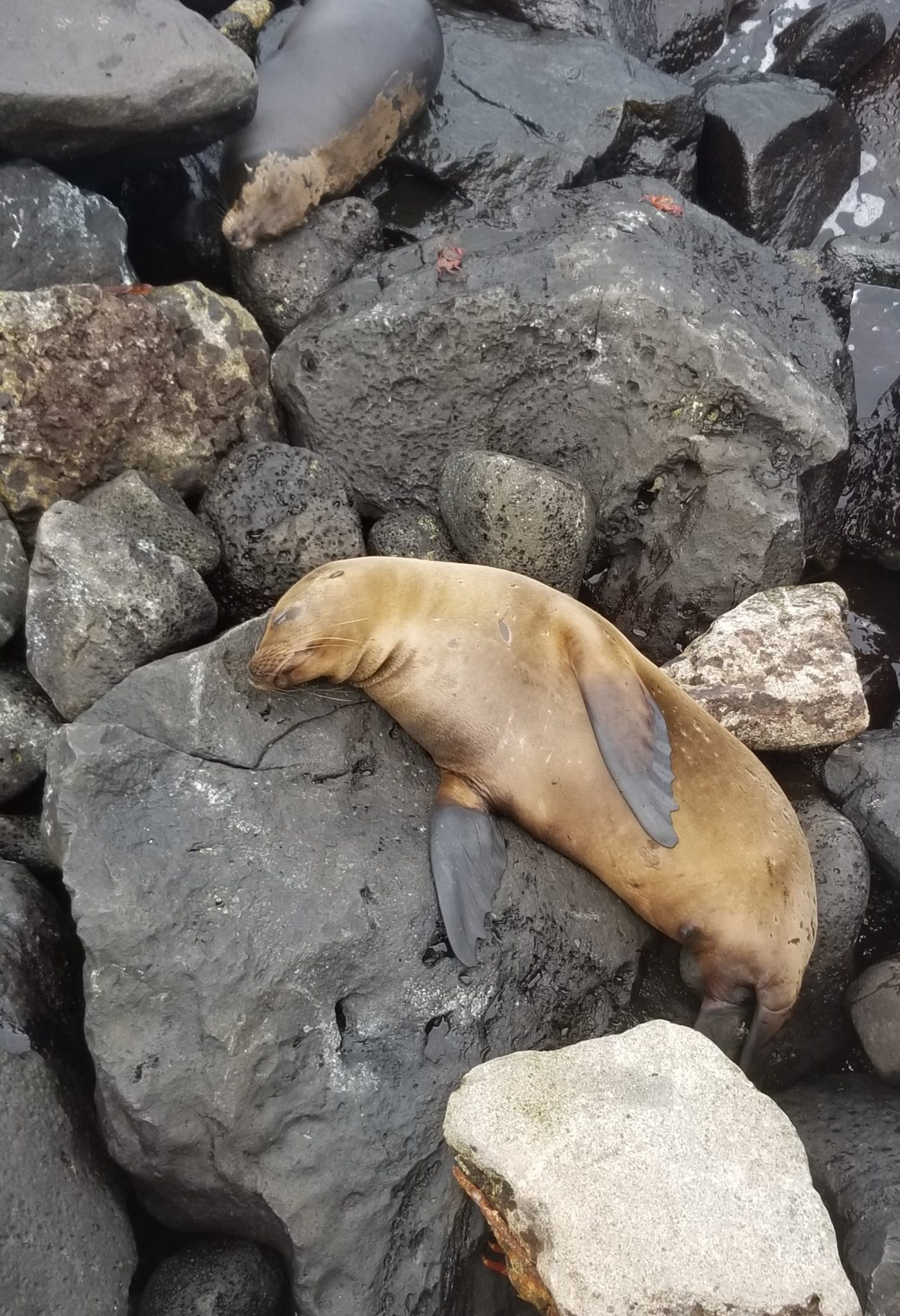
Climbing on board the ship was definitely an uphill climb. For me, it was the first of my challenges for the week. It made me stop and wonder if my ankle replacement (named Alice) was capable of doing everything I wanted to do.
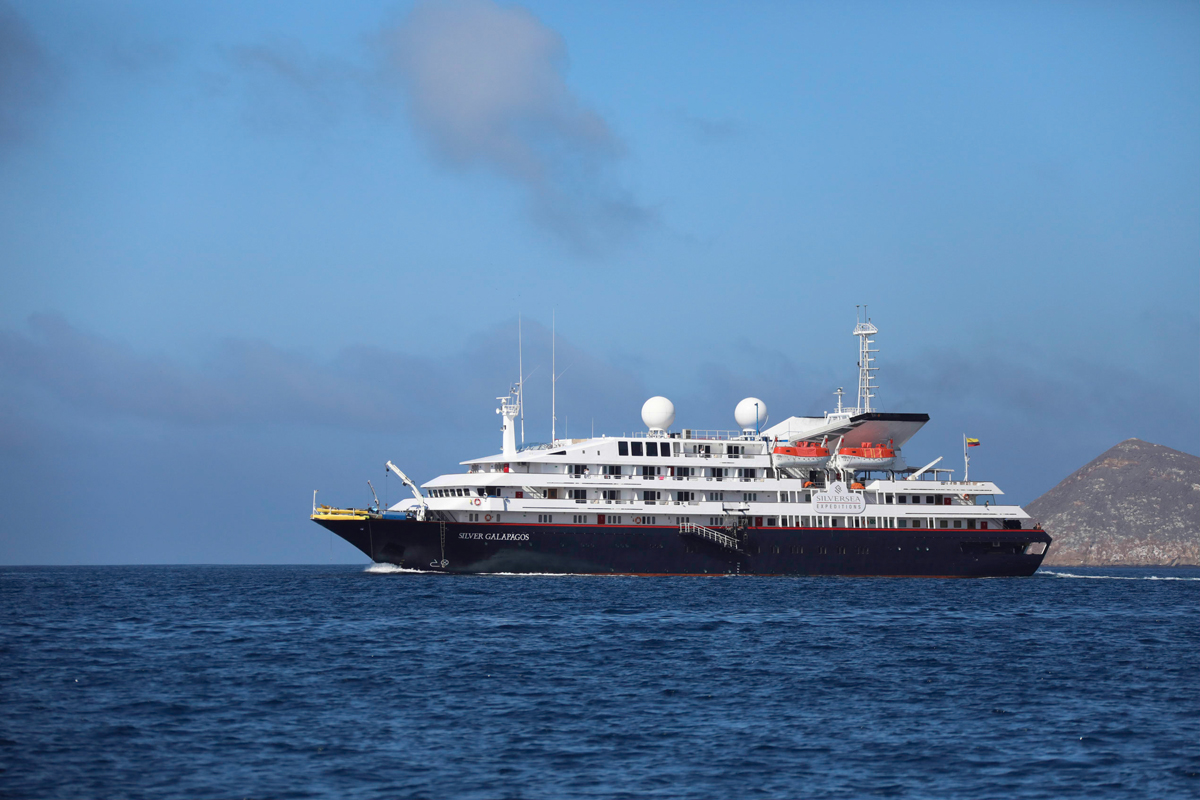
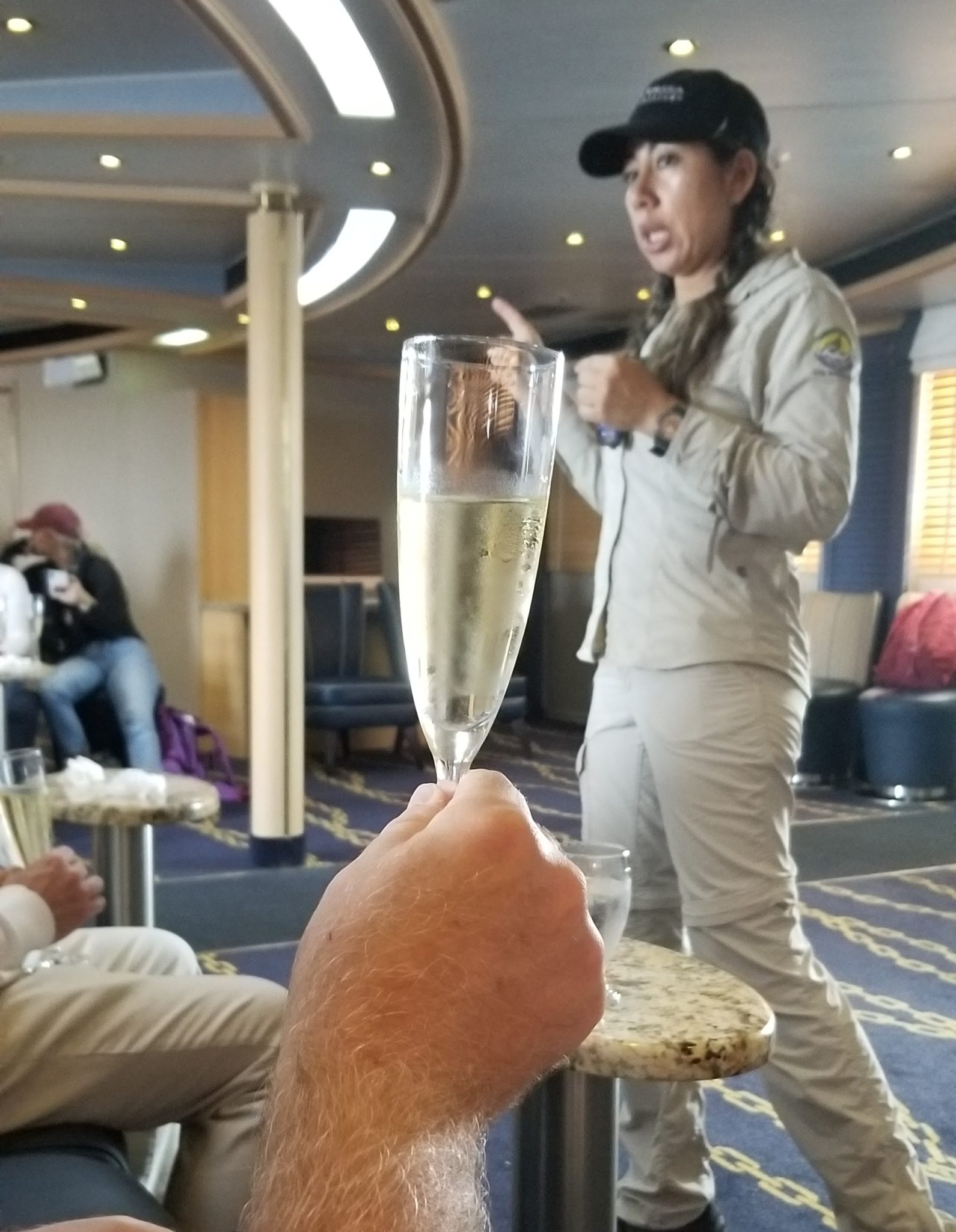
Once on the ship, we were handed a glass of champagne. Nice way to start! We had a talk about what we would be doing during our trip. Then we received our i.d. badges, had the first of our delicious lunches, and went to see our room. The ship was smaller than any of the other cruises we have taken but well equipped for everything needed. The rooms were very nice and comfortable. We even had a butler. Well, he wasn’t just ours but he was great as were the entire staff.
It was a luxury adventure trip that had multiple choices of what to do each day. The days started early and ended before dinner at 7:30. You had to figure out how not to get too exhausted. They had many naturalists who guided, provided support, and lectured on the wonders of the Galapagos. They were all Galapagos enthusiasts and their excitement carried over to all of us.
We had at least 2 to 3 life preservers during the course of the trip. There were ship life preservers, the zodiac life preservers, the sea kayaking life preservers and I don’t remember if there was any more but we certainly felt protected. We all looked like miniature Michelin men and women.
Perhaps I should go back and talk about the weather. January is on the cusp of the rainy season. It is also the warmest part of the year. It was about 80 degrees and we were fortunate that the weather was pretty good for the most part. There was some cloudy weather but we were never rained out during any part of the trip.

That evening, we saw one of the sights that defines the Galapagos; Jumper Rock. The Captain wanted to make sure we had sufficient chance to see the rock from all angles and we cruised around it a few times. It is certainly memorable.

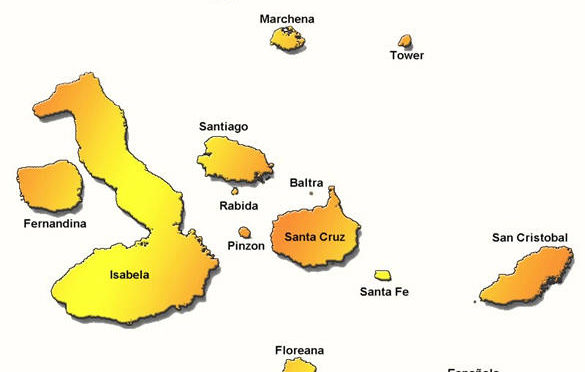
Terrific adventure. Thanks for sharing.❤️
Hi Lynn, more will be coming.